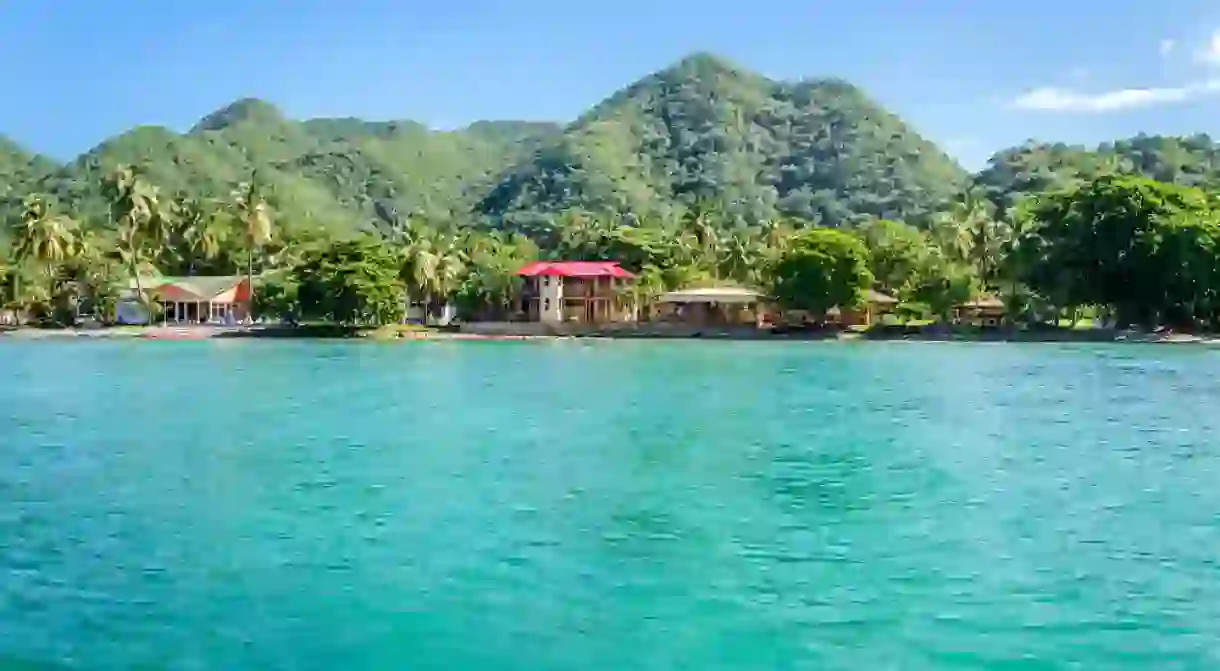Welcome to Isla de Providencía: The Colombian Island in the Caribbean You Never Knew Existed

Isla de Providencía is a Colombian-Caribbean island located in the Caribbean Sea, around 140 miles (225 kilometers) off the coast of Nicaragua. The island and its surrounding archipelago have belonged to a number of countries over the years, but now they belong to Colombia, even though they are located over 500 miles (804 kilometers) off the country’s coastline.
Providencía is a small island with around 12 miles (20 kilometers) of coastline. The island is part of three Colombian-Caribbean islands that make up the Colombian Department Archipelago of San Andrés, Providencía and Santa Catalina. San Andrés is the largest of the three islands, covering an area of 10 square miles (26 kilometers square) and is located four hours by boat from Providencía. Santa Catalina is the smallest of the three islands and is connected to Providencía by a 330-foot (100-meter) bridge. The area of Providencía and Santa Catalina covers seven square miles (18 kilometers squared).

Providencía is a mountainous island, with the highest point located at around 118 feet (36 meters) above sea level. The island contains a number of ecosystems including mangroves, coral reefs, seagrass and dry forest, as well as mountainous terrain. The Old Providencía Bean Lagoon National Park is located on the island, to help protect the fragile ecosystems and control the commercialization of the island.
The island has belonged to a number of countries throughout the centuries, including England, Spain, Nicaragua, and finally Colombia. The Miskito indigenous tribe of Central America first inhabited the island, before it was invaded and taken by the English Puritan Colony in 1629–1630, where they established and used the island within the slave trade to grow tobacco, using the slaves to farm the products, which they sold on. In 1641 the Spanish gained control of the islands until the English regained control in 1670 led by pioneer Henry Morgan. The Spanish gained back control of the islands in 1689, from then on the island was controlled by pirates and explorers of the Caribbean Sea. The Spanish kept control of the island past Colombia’s Independence, until Nicaragua and Colombia fought over the islands and subsequent maritime area. In 1928 the Colombian and Nicaraguan governments settled an agreement, which resulted in Colombia gaining full control of the islands, and in 2012 Colombia was also awarded control of the maritime area surrounding the islands.

Today the island’s disputed history has affected the culture, and still the island has more of a Caribbean culture rather than Colombian, and the main languages are English, San Andrés and Providencia Creole, and Spanish (Colombian moving to the island). The island is still largely undeveloped and relatively undiscovered, while many believe the island still contains undiscovered treasures. The island is full of caves, smaller surrounding islands, and contains UNESCO Marine Protected Areas (Safflower Biosphere Reserve) which make up 10 percent of the Caribbean coral reef system.
Providencía is known as the sea of seven colors due to its variety of turquoise, blues and greens. The island is a great place for snorkeling, diving, swimming, and exploring the island’s vast natural landscapes and ecosystems. Providencía has influenced Colombian culture, producing a large number of reggae and reggaeton artists, the island vibes, rastas, cultural roots, and musical genres.
The island is home to a large number of unique and windfall wildlife species, one of which is the black land crab (Gercarcinus Lateralis), which in the months of April and May venture down from the mountains and forests towards the ocean to lay their eggs. These crabs descend down the hills in their thousands, which creates an amazing sight and unique experience to see.

Providencía can be reached by aeroplane (30 minutes), or by boat (four hours), both from San Andrés. Flights from Bogotá, Cali, Cartagena, Medellín, Barranquilla, Panama City, and Guatemala City are available to San Andrés.
Find places to stay with our partner, Hotels.com













